Course Offerings by Semester
For complete and accurate meeting days and times for courses of interest, and to register, please visit the Ohio State Master Course Schedule. The master schedule is maintained by University Registrar and includes information about courses offered across all of our campuses. While we make every effort to ensure that the information here is complete and correct, the Ohio State Master Course Schedule linked above is guaranteed to be the most accurate.
Spring 2023 Course Offerings
History of Art 2001 - History of Western Art I: Ancient and Medieval Worlds
Dr. Sarah Schellinger
Class #19872 (+ Recitation) | IN PERSON
Lecture: MON & WED 9:10-10:05AM | Recitation: THUR or FRI 9:10-10:05AM
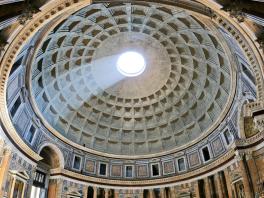
This course examines the history of Western Art (architecture, painting and sculpture) from the third millennium BCE through the fifteenth century CE. Rather than a complete “survey” of that period, the course will concentrate its attention on a select group of representative monuments. We will examine not only the monuments themselves, but also the historical context in which they were produced in order to explore their purpose and the way that they functioned. There will be a strong emphasis on visual analysis and understanding how visual forms convey meaning and relate to the viewer. Our goal is to impart not only a body of knowledge but also a set of critical tools, which you should be able to apply to even material not specifically covered in this course.
GE foundation lit, visual and performing arts and historical and cultural studies course
History of Art 2001D - History of Western Art I: Ancient and Medieval Worlds
Class #27431 | ONLINE | Fully Asynchronous
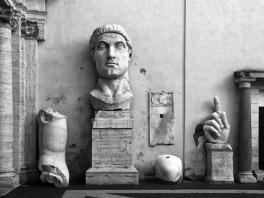
This course examines the history of Western Art (architecture, painting and sculpture) from the third millennium BCE through the fifteenth century CE. Rather than a complete “survey” of that period, the course will concentrate its attention on a select group of representative monuments. We will examine not only the monuments themselves, but also the historical context in which they were produced in order to explore their purpose and the way that they functioned. There will be a strong emphasis on visual analysis and understanding how visual forms convey meaning and relate to the viewer. Our goal is to impart not only a body of knowledge but also a set of critical tools, which you should be able to apply to even material not specifically covered in this course.
GE foundation lit, visual and performing arts and historical and cultural studies course
History of Art 2001 Night - History of Western Art I: Ancient and Medieval Worlds
Class #34333 | IN PERSON | TUE & THUR 5:30-6:50PM
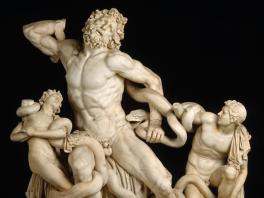
This course examines the history of Western Art (architecture, painting and sculpture) from the third millennium BCE through the fifteenth century CE. Rather than a complete “survey” of that period, the course will concentrate its attention on a select group of representative monuments. We will examine not only the monuments themselves, but also the historical context in which they were produced in order to explore their purpose and the way that they functioned. There will be a strong emphasis on visual analysis and understanding how visual forms convey meaning and relate to the viewer. Our goal is to impart not only a body of knowledge but also a set of critical tools, which you should be able to apply to even material not specifically covered in this course.
GE foundation lit, visual and performing arts and historical and cultural studies course
History of Art 2002 - History of Western Art II: Europe and the United States, Renaissance to Modern
Professor Jody Patterson
Class #19878 (+ Recitation) | IN PERSON
Lecture: MON & WED 10:20-11:15AM | Recitation: Varied
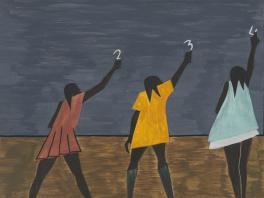
This course examines the art of Europe and the United States from about 1400 to the present, with an emphasis on developments in painting. Rather than a traditional survey of that period, the course will concentrate on a select group of representative works that shaped—and were shaped by — Western social, political, economic, and intellectual history. There will be a strong emphasis, too, on questions of analysis and interpretation — including, in some cases, the changing history of the artworks’ reception. The goal will be to impart not only a body of knowledge but also a set of critical tools, including visual literacy, that students will be able to apply to a wide range of material not specifically covered in the course.
GE foundation lit, visual and performing arts and historical and cultural studies course
History of Art 2002D - History of Western Art II: Europe and the United States, Renaissance to Modern
Class #19885 | ONLINE | Fully Asynchronous
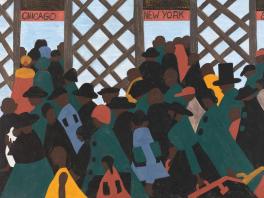
This course examines the art of Europe and the United States from about 1400 to the present, with an emphasis on developments in painting. Rather than a traditional survey of that period, the course will concentrate on a select group of representative works that shaped—and were shaped by — Western social, political, economic, and intellectual history. There will be a strong emphasis, too, on questions of analysis and interpretation — including, in some cases, the changing history of the artworks’ reception. The goal will be to impart not only a body of knowledge but also a set of critical tools, including visual literacy, that students will be able to apply to a wide range of material not specifically covered in the course.
GE foundation lit, visual and performing arts and historical and cultural studies course
History of Art 2002 Night - History of Western Art II: Europe and the United States, Renaissance to Modern
Class #30067 | IN PERSON | TUE & THUR 5:30-6:50PM
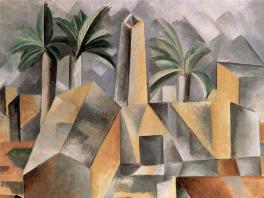
This course examines the art of Europe and the United States from about 1400 to the present, with an emphasis on developments in painting. Rather than a traditional survey of that period, the course will concentrate on a select group of representative works that shaped—and were shaped by — Western social, political, economic, and intellectual history. There will be a strong emphasis, too, on questions of analysis and interpretation — including, in some cases, the changing history of the artworks’ reception. The goal will be to impart not only a body of knowledge but also a set of critical tools, including visual literacy, that students will be able to apply to a wide range of material not specifically covered in the course.
GE foundation lit, visual and performing arts and historical and cultural studies course
History of Art 2002 Honors - History of Western Art II: Europe and the United States, Renaissance to Modern
Professor Daniel Marcus
Class #34212 | IN PERSON | WED & FRI 12:45-2:05PM
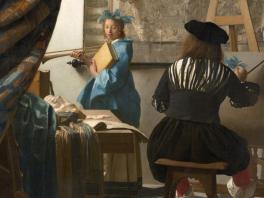
This course examines the art of Europe and the United States from about 1400 to the present, with an emphasis on developments in painting. Rather than a traditional survey of that period, the course will concentrate on a select group of representative works that shaped—and were shaped by — Western social, political, economic, and intellectual history. There will be a strong emphasis, too, on questions of analysis and interpretation — including, in some cases, the changing history of the artworks’ reception. The goal will be to impart not only a body of knowledge but also a set of critical tools, including visual literacy, that students will be able to apply to a wide range of material not specifically covered in the course.
GE foundation lit, visual and performing arts and historical and cultural studies course
History of Art 2003 - The Art and Visual Culture of East Asia
Professor Christina Mathison
Class #19886 (+ Recitation) | IN PERSON
Lecture: MON & WED 10:20-11:15AM | Recitation: THUR or FRI 10:20-11:15AM
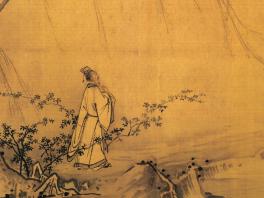
This course offers an introduction to the visual arts in East Asia, from the Neolithic through today. The course examines in particular the relationship between cultural production and changing notions of authority in East Asia in a comparative historical perspective. Case studies will be drawn from China, Korea, Japan, and neighboring regions. Issues examined include: religion and early state formation; courtly culture and monumentality; the development of urban popular culture; the age of empire; art and modernization.
GE foundation lit, visual and performing arts and historical and cultural studies course
History of Art 2003 Night - The Art and Visual Culture of East Asia
Class #35099 | IN PERSON | TUE & THUR 5:30-6:50PM
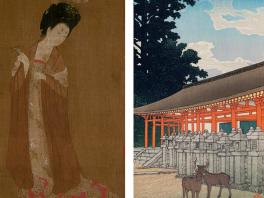
This honors course is a thematic introduction to the major artistic and cultural trends of East Asia. We will study major developments and issues in the arts of China, Japan, and Korea, discussing both cross-cultural artistic flows and the many cultural and artistic differences between cultures in the region. Major monuments of East Asian art and architecture will serve as our primary evidence for explorations of the culture, religions, and history of the region.
GE foundation lit, visual and performing arts and historical and cultural studies course
History of Art 2003 Honors - The Art and Visual Culture of East Asia
Professor Christina Mathison
Class #31491 | IN PERSON | TUE & THUR 11:10AM-12:30PM
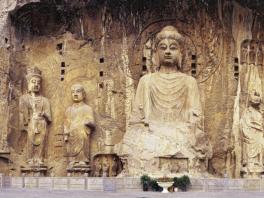
This honors course is a thematic introduction to the major artistic and cultural trends of East Asia. We will study major developments and issues in the arts of China, Japan, and Korea, discussing both cross-cultural artistic flows and the many cultural and artistic differences between cultures in the region. Major monuments of East Asian art and architecture will serve as our primary evidence for explorations of the culture, religions, and history of the region.
GE foundation lit, visual and performing arts and historical and cultural studies course
AFAMAST/History of Art 2101 - Introduction to African Art and Archaeology
Professor Sarah Van Beurden
Class #35852 | IN PERSON | TUE & THUR 12:45PM-2:05PM
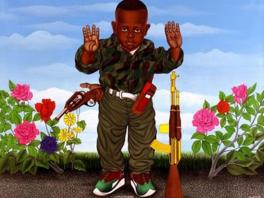
Is there a difference between African and Western ideas about art? Is there such a thing as ‘African’ art, or is that too general? What role does art play in today’s cultures of Africa? How useful are the categories of ‘traditional’ and ‘modern’ when discussing African cultures? How did so much African art end up in western museums and private collections? Why do we see so many artistic traditions around the world that were influenced by African art?
In this course we will explore a variety of African art forms and learn about the cultures that produce them. The course provides a historical survey as well as a thematic overview of the artistic cultures of the African continent. Emphasizing cultural diversity and complexity, we will explore the arts of a wide range of African peoples, from precolonial civilizations until contemporary times. In addition, a number of artistic traditions of the African Diaspora are explored in light of their connections to the African continent. We will also examine the collection and study of African art by the west, as well as the history of its display in western museums, and the current debate around the issue of the restitution of these collections.
History of Art 2901D: Intro to World Cinema
Class #27432 | ONLINE | Fully Asynchronous
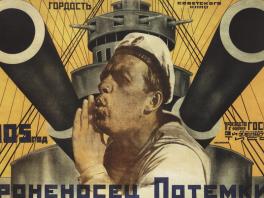
This course will introduce students to the history of film as an artistic medium and a global art form. We will track technological, aesthetic, and formal developments in its evolution from photographic and proto-cinematic technologies to digital cinema (roughly 1827-2001) by studying particular masterpieces, and focusing on the role of the director or auteur. We will pay close attention to the medium’s complex relationship to time, its changing materiality (and “medium specificity”), and its fraught relationship to truth and reality. Students will engage in a historical and formal study of international cinema through a chronological survey of its major forms, techniques, and its relationship to the broader history of art, as well as social and political history. We will sample its major and “minor” forms, from Hollywood productions to art gallery experiments and cinema from the developing world. Students will be introduced to the grammar of film through a historical account of its formal evolution and the stylistic analysis of the visual and narrative structures of individual films.
GE VPA and diversity global studies course
GE foundation lit, vis and performing arts course
History of Art 3010 - Gender and Sexuality in European Art
Professor Karl Whittington
Class #34066 | IN PERSON | TUE & THUR 2:20-3:40PM
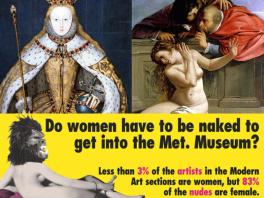
This course offers an introduction to the intersectional study of European Art, exploring the intertwining ideologies of gender, sexuality, race, and ethnicity from the Ancient Mediterranean World to the present. The way artworks impact and construct ideas and stereotypes about gender, race, and sexuality in the modern world are deeply influenced by their development in premodern history. Topics to be explored include the ways in which ideas about gender roles and identities are shaped by artworks; the gendered contexts of artistic production; gendered practices of viewing works of art; the changing status of female and non-white artists and patrons in Europe; the way people of color were depicted in premodern European art; and queer and transgender artists and artworks. We will investigate the ways in which works of art enforced particular codes of behavior for people of different genders and races, but also how works of art served as sites of resistance to such roles and stereotypes, and as a place where individual identities were negotiated and portrayed. We will explore both famous works of European art and also lesser-known paintings, sculptures, buildings, and objects of visual culture.
New GE Course in Race/Ethnic/Gender Diversity Category (REGD)
GE VPA course
GE foundation lit, vis and performing arts and race, ethnicity and gender div course
History of Art 3102 - Arts & Cultures of Africa and the Diaspora
Instructor: Lupenga Mphande
Class #37084 | HYBRID | TUE 11:10 AM - 12:30 PM (In Person) THUR 11:10 AM - 12:30 PM (Virtual)
The notion that to have a nation it is necessary for there to be a common language; a common territory and common culture has failed to stand the test of time or the scrutiny of scientific definition of objective reality. Africa is one of the largest continents on earth, with its implied diversity. The dispersal of African peoples because of Transatlantic and Trans-Indian Ocean Slave and colonization resulted in the exportation of African ideas and cultures to far-away corners of the world.
GEL Visual and Performing Arts
GEL Diversity: Global Studies
GEN Theme: Migration, Mobility, and Immobility
History of Art 3205 - Art and Judaism
Professor Michael D. Swartz
Class #37150 Second Session | IN PERSON | TUE & THUR 2:20-3:40PM
An exploration of the nature and function of art in ancient Judaism from the standpoints of history, cultural history, and material culture. Cross-listed as JewshSt 3205.
GE VPA course
GE foundation lit, vis and performing arts and race, ethnicity and gender div course
History of Art 3211 - Art and Civilization in Mesopotamia
Dr. Sarah Schellinger
Class #29999 | IN PERSON | TUE & THUR 12:45-2:05PM

Produced in the cradle of civilization, Mesopotamian art has a rich history of constructing monuments and creating objects that would provide insight into the lives of the people living during the advent of civilization. The aim of this course is to provide an overview of the major sites, structures, and artifacts throughout the greater Mesopotamian region from the beginning of the Neolithic revolution through the Parthian and Seleucid periods.
GE VPA course
GE foundation lit, vis and performing arts course
History of Art 3521 - Renaissance Art
Dr. Kristen Adams
Class #29590 | IN PERSON | MON & WED 5:30-6:50PM
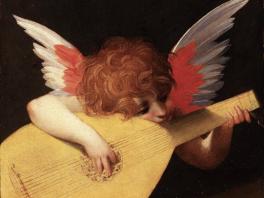
This course offers a panoramic introduction to the greatest artists and masterpieces of the Italian Renaissance from its beginnings in Florence through its triumph in Rome and Venice. After setting the stage with a brief overview of the art of the Late Gothic period in Italy, lectures will trace the nature of the revolutionary changes that transformed painting and sculpture in the 15th century and 16th centuries. One major purpose of the course will be to clarify the special characteristics of Renaissance art that continue to have their place with art and artists even today.
GE VPA and diversity global studies course
GE foundation lit, vis and performing arts course
History of Art 3611 - Impressionism
Professor Andrew Shelton
Class #35347 | IN PERSON | TUE & THUR 3:55-5:15PM
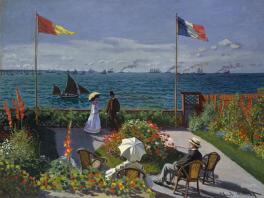
This course offers a historical and critical exploration of one of the most beloved movements in the entire history of Western art: French Impressionism. In addition to considering the major artists of this movement and the social, political, and cultural contexts in which they lived and worked, the course will also examine the enduring fascination with Impressionism throughout the past 140 years. Among the questions we will ask: Is the current popularity of Impressionism based on a misunderstanding of the radical nature of what was in reality a revolutionary art form; or, alternatively, is its current stature based on a legitimate appreciation of what is quintessentially an “easy,” escapist, “viewer-friendly” art form? How is it, in short, that the precedent of French Impressionism continues to inform so powerfully our ideas and values about art today? To what extent has the general popularity and commercial success of Impressionism produced a backlash among academic art historians, professional artists, and other art-world elites or “insiders”?
GE VPA course
GE foundation lit, vis and performing arts course
History of Art 3901 - World Cinema Today
Mark Svede
Class #19888 | IN PERSON | TUE & THUR 5:30-6:50PM
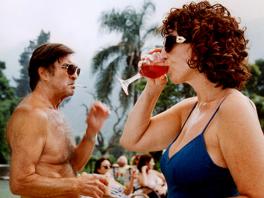
This course will survey the best of world cinema within the past decade or two, including representative examples of national cinemas, such as (potentially, since the selections would change) Iranian, Chinese, Taiwanese, and Indian; ethnic cinemas, such as (potentially) Kurdish, Jewish diaspora, and Quebecois; regional cinemas, such as (potentially) Eastern European and Middle Eastern cinemas; continental cinemas, such as African and South American; global cinema, such as Euro-American, Hong Kong, and Dogme 95; and the cinemas of civilizations, such as Islamic, Judeo-Christian, and Confucian. Not all these categories, or others that are possible, are represented in any given quarter.
GE VPA and diversity global studies course
GE foundation lit, vis and performing arts course
History of Art 3901D - World Cinema Today
Professor Erica Levin
Class #28808 | ONLINE | ASYNCHRONOUS

Despite its common usage “world cinema” lacks a proper, positive definition. It tends to be defined negatively as “non-Hollywood cinema,” which Lúcia Nagib observes, “unwittingly sanctions the American way of looking at the world, according to which Hollywood is the center and all other cinemas are the periphery.” This course provides an introduction to world cinema that attends carefully to questions of definition. The emergence of global art cinema is often mapped as a succession of “new waves”: Italian neorealism, the French nouvelle vague, the Danish Dogma movement and New Iranian Cinema. We will look at how the aesthetics of realism, concerned above all with the texture and temporality of everyday life, set these film movements (and other parallel developments in African, Latin American, Asian cinema) apart from films shaped by the codes of genre and commercialism. We will consider how recent world cinema departs from realism to depict experiences characterized by transnationalism, post-colonialism, and migration. Placing these films into the broader historical and (multi-) cultural contexts of their production, we will examine how world cinema today not only engages life in the present, but also calls up occluded fragments of the past.
GE VPA and diversity global studies course
GE foundation lit, vis and performing arts course
History of Art 4010 - Introduction to the Methods and Theories of Art History
Professor Ravinder Binning
Class #19889 | IN PERSON | TUE & THUR 11:10AM-12:30PM
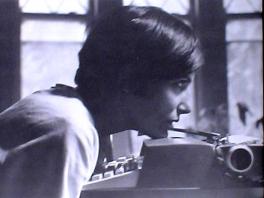
To practice art history is to employ certain methods and theoretical orientations. Yet those very methods are the product of fascinating intellectual movements. This course will make us conscious of our practice by examining major essays that shaped the discipline and demonstrate different analytical techniques. At the same time, our course will reflect on how world crises, wars, and political movements shaped art history, making its questions immediately relevant, even revolutionary. Therefore, we will confront the influence of European aesthetic philosophy as well Marxist, Feminist, psychoanalytic traditions in addition to recent turns to materiality and the global. Students will become more aware of their own interests and commitments within the field, as well as more sensitive of their gaze onto the past.
History of Art 4020 - Special Topics in Architecture: Space, Ritual, and the Body
Professor Ravinder Binning
Class #35100 | IN PERSON | WED & FRI 9:35-10:55AM
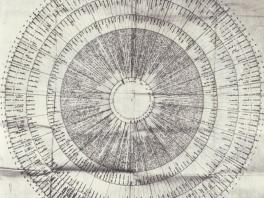
The history of architecture is a history of concealing how the mind and body become implicated, oriented, even controlled by space. With this theme in mind, this course will introduce masterpieces of Egyptian, Greco-Roman, Byzantine, Latin, and Islamic building traditions. It will draw from cutting-edge research methods regarding how architectural form relate to historical attitudes about the body and mind. It will confront questions such as: how might a temple's manipulation of open and closed space render movement within architecture into an experience of submission? How do certain medieval buildings encrypt memory and other secret information in their use of numbers and diagrams? What sources do we use to uncover such information, especially when the buildings have vanished?
History of Art 4531 - 17th-Century Art of the Netherlands
Dr. Kristen Adams
Class #34072 | IN PERSON | MON & WED 3:55-5:15PM
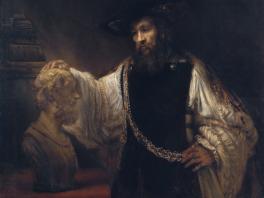
This class will explore the economic, religious, and political transformations that occurred during the late sixteenth- and seventeenth century in Northern Europe. Students will consider how artists working in the Netherlands, Belgium, England, and France responded to those intersecting forces and created works that shaped and documented the cultures of their time. Students will learn about the impact of religious strife on artistic production; the emergence of capitalism and a flourishing art market; the development of new genres; the intersections between art and scientific inquiry; cultural encounters and colonial expansion. Throughout the semester we will engage in a close examination of celebrated paintings by Rembrandt, Vermeer, Rubens, Poussin, and their contemporaries, as well as architecture, prints, and the decorative arts to reconstruct the broader historical transformation of art, its production and reception during this period.
History of Art 4630 - American Art
Dr. Ellen Feiss
Class #34073 | IN PERSON | MON & WED 11:10AM-12:30PM
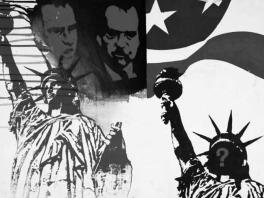
This course explores art after 1945 in relation to the U.S. imperial project. In the wake of the Second World War, the United States vied for dominance on the world stage, expanding its influence through foreign policy, military intervention, and cultural forms of extraterritorial intervention, far beyond what are normally considered its continental borders. In addition to colonies that had been maintained since the 19th century (the Philippines, Puerto Rico, and the Panama Canal Zone, to name only a few), the U.S. increased its footprint during the Cold War to include military zones, infrastructure projects, and various foreign aid set-ups in Europe, Latin America, Asia, and many other parts of the world.
The course introduces the idea of an imperial United States through art used to bolster it as well as the artworks and visual strategies that emerged to resist it. Sampling some key formal developments after 1945 (abstraction, pop and appropriation, and performance and institutional critique) we will think about how artists were knowing and unwitting participants in U.S. empire as well as its most evocative critics, making visible an imperial project otherwise obfuscated. We will encounter both canonized and lesser-known artworks, performances, and exhibitions in an expanded history of U.S. art, with case studies from within the nation’s accepted borders as well as made in and about its occupied territories.
GE VPA course
GE foundation lit, vis and performing arts course
History of Art 4815 - Modern and Contemporary Chinese Art
Professor Judy Andrews
Class #34074 | IN PERSON | TUE & THUR 9:35-10:55AM
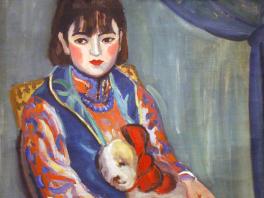
This course will explore the ways in which Chinese artists of the 20th and early 21st centuries defined modernity and tradition against the complex background of China’s history. A key issue for art of this period is the degree to which Chinese artists have chosen to adopt or adapt Western conventions and the extent to which they have rejected them. Equally legitimate positions have been taken by artists and critics whose work actively opposes the legacy of the past and by those who pursue innovations based upon their particular understandings of the Chinese tradition. By examining artworks in different media, including traditional ink and color painting, oil painting, graphic design, woodblock prints, and recent installation and video art, along with other documentary materials in translation, we will investigate the most compelling of the multiple realities that Chinese artists have constructed for themselves.
History of Art 5312 - Art and Architecture of Greece
Professor Mark Fullerton
Class # UG - 34168 | G - 34169
HYBRID | WED & FRI 11:10AM-12:30PM
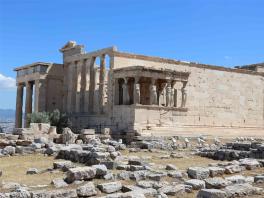
This course will explore the art history, archaeology, and material culture of Ancient Greece to the end of the Hellenistic Period (c. 3000-31 BCE. Students will be encouraged both to consider the wide range of disciplines that contribute to the field of Classical Archaeology, including such sources of evidence as material remains, inscriptions, and literature, and to apply the methodologies of art history, archaeology, anthropology, history and philology.
This course is designated as a hybrid course, meaning there is a blending of online readings, videos and assignments with periodic in-class meetings.
History of Art 5643 - New Media Art and Theory
Professor Kris Paulsen
Class # UG - 34071 | G - 34070
IN PERSON | WED & FRI 12:45-2:05PM
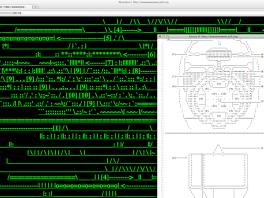
This course will explore the intersections of art and technology from aesthetic, philosophical, and political vantage points. We will immerse ourselves in the strange borderlands between art and engineering, looking to how artworks can help us understand and critique the ways in which new media and increasing mediation have affected perception, communication, and our bodies. We will develop a visual and verbal vocabulary for analyzing “new media” in the 20th and 21st century in its many forms, practices, and materials, ranging from early experiments with live video, satellites, hypertext, and written instructions to algorithmic and generative art, AI, augmented and virtual reality, bio art, and telerobots.
History of Art 5905 - Avant-Garde Cinema
Professor Erica Levin
Class # UG - 34068 | G - 34069
IN PERSON | TUE & THUR 12:45-2:05PM
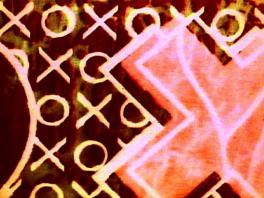
Many historically significant films identified as "visionary," "personal," "experimental," “political,” and "modernist” have been produced in surprisingly close proximity to the film industry. This course traces the complex and shifting relationship between what film historian David E. James designates as “major” (commercial, Hollywood) cinema and the “minor” cinemas of the avant-garde produced by artists, amateurs, agitators, and the like. Completed with limited financial resources, this work has often been distributed through alternative, self-organized channels of exhibition. Looking closely at narratives of stylistic evolution in avant-garde cinema, we will focus on points of contact between the history of art and cinema in both its major and minor modes. At the same time, we will remain attentive to questions that this approach risks leaving unanswered. How, for example, has the history of inventive, non-commercial cinema been shaped in unexpected ways by geography, (sub)culture, and politics? What kinds of communities and institutions have formed to support precarious modes of filmmaking in different moments and places? Where do the histories of individual filmmakers intersect with the often-conflicted social worlds their films address? With these questions in mind, we will look closely at a wide range of films made to surprise, unnerve, and provoke viewers since the early 1920s.
History of Art 8561 - Buried Mirrors: Connected Histories of Spain and Spanish America, 1492-1844
Professor Byron Hamann
Class #34067 | ONLINE | WED 2:15-5:00PM

A sixteenth-century Ottoman manuscript illustrated with images of Spanish America. A seventeenth-century Spanish royal portrait filled with objects and substances produced by Amerindian subjects across the ocean. An eighteenth-century archive created by radically reforming a sixteenth-century building in Seville and filling it with documents about the Americas excised from other archives throughout Spain. A fifteenth-century Spanish to Latin dictionary whose word lists were used in the sixteenth and seventeenth centuries to create dictionaries of Spanish to Arabic, Nahuatl, Quechua, Aymara, Tagalog. How can we imagine, and write, connected histories of the past, histories that transcend the confines of single points on the globe? This seminar, named in honor of Carlos Fuentes' brilliant Atlantic-crisscrossing The Buried Mirror: Reflections on Spain and the New World (1992), considers how historians, art historians, and anthropologists have met the challenge of writing multisite (if not fully "global") histories of the early modern world.
History of Art 8601 - Democracy and the American South, Civil War to Civil Rights
Professor Jody Patterson
Class #34163 | IN PERSON | THUR 2:15-5:00PM
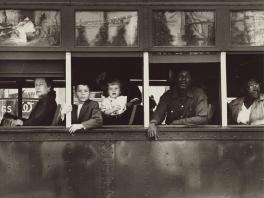
This seminar will explore a series of case studies that focus on the relations between art and politics in the United States from the Civil War and Reconstruction in the 19th century, through the Great Migration and the Harlem Renaissance during the early decades of the 20th century, to Civil Rights activism at mid-century. This seminar is intended to expand students’ knowledge of art and culture in the US and is concerned with the practices and ideologies of cultural democracy, particularly as they pertain to representations engaging the South over the course of a tumultuous century when Americans and their institutions were sorely tested by uncertainty, adversity, fear—and hope.
History of Art 8821 - Global Art History and its Discontents
Professor Namiko Kunimoto
Class #29008 | IN PERSON | TUE 2:15-5:00PM
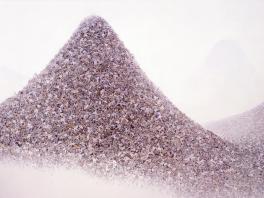
What is the Global Turn and how has it shaped current art history? Why are universities hiring “Global Art Historians” and how might they resolve the center-periphery model of scholarship? This seminar will focus on recent writings about the idea of Global Art History, including those by James Elkins, Aruna D’Souza, Partha Mitter, Rey Chow, Steven Nelson, David Summers, Sonal Khullar and others. We will examine how the Global Turn has shaped our understanding of art in Japan, China, and other countries, and consider what theoretical alternatives and actions are possible.
